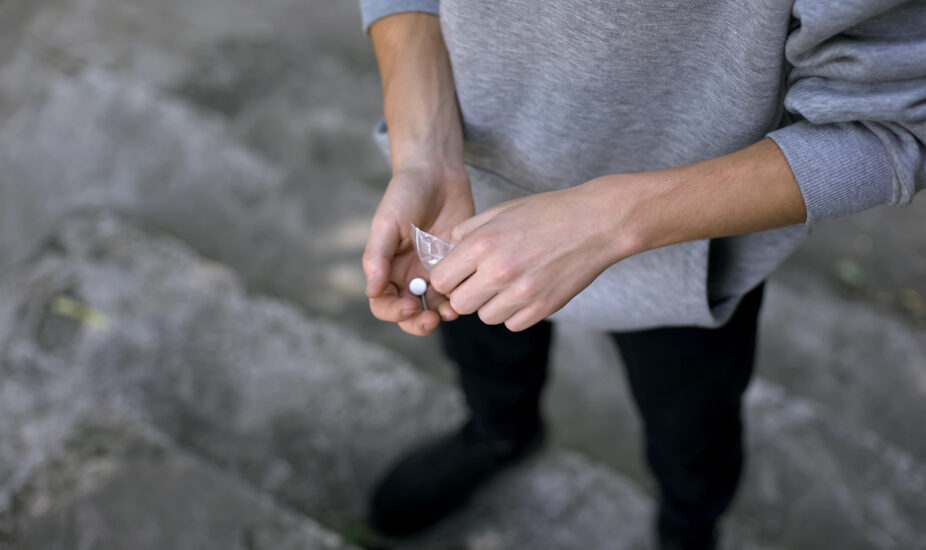Why Parents Must Talk to Their Teens—Before It’s Too Late
A dangerous misconception is putting our kids at risk. Despite years of headlines, heartbreaking stories, and public health warnings, the majority of high school seniors still don’t see taking a narcotic once or twice as a great risk.
That’s not speculation – it’s the latest data from Monitoring The Future’s 2024 survey results, which found that 66.5% of 12th graders don’t view experimenting with narcotics like Vicodin, OxyContin, or Percocet as highly dangerous.
This perception gap is deadly. Teens aren’t getting these drugs from doctors. They’re getting them from friends, dealers, and social media – and they’re often fake pills laced with fentanyl.
The DEA seized 80 million counterfeit pills in 2023, and testing revealed that half contained a lethal dose of fentanyl. That means a single pill, or even half of one pill, could be enough to kill a teen instantly.
Why Aren’t Teens Getting the Message?
As parents and educators, we might assume that by now, teens understand the dangers of fentanyl. But the numbers prove otherwise.
Even with widespread awareness campaigns, social media warnings, and tragic news stories, too many teens still believe that experimenting “just once” is harmless.
So, why do teens take fentanyl?
Most of them don’t realize they are. They aren’t actively looking for fentanyl. They think they’re taking something safe – a painkiller for stress, a Xanax for anxiety, or a party drug their friend says is “no big deal.”
Instead, they’re unknowingly taking a pill that looks like a prescription drug and is actually a counterfeit pill.
Some teens try pills out of curiosity, unaware of the real risks. Others trust that if a pill looks like a prescription, it must be safe. But the reality is, many counterfeit pills contain fentanyl – a deadly substance that can take a life in an instant.
The DEA’s 2023 seizures are equivalent to more than 390 million lethal doses of fentanyl.
The truth is, you cannot tell if a pill is fake just by looking at it – even dealers don’t always know if their supply contains fentanyl. Never trust your own eyes to determine if a pill is legitimate. Here are some examples of real and fake pills from DEA.gov.

The only truly safe medications are those prescribed by a trusted medical professional and dispensed by a licensed pharmacist.
This is why one conversation isn’t enough. Kids need to hear this message again and again – in different ways, from different sources, until it sticks.
How Do You Get Through to Your Teen?
We all know how hard it is to get teens to listen. They roll their eyes, tune us out, and sometimes act like they know more than we do. But repetition is key. Prevention experts say the most effective way to teach a lesson is by land, by sea, and by air – in other words, in multiple ways, across different moments. Ultimately, your child’s safety and future is worth the eye rolls.
That’s why having effective resources is crucial. Natural High offers a variety of tools, including these two powerful video resources:
- “Dead on Arrival” (20-minute documentary): Real parents share their heartbreaking stories of losing their children to fentanyl poisoning. This longer format evokes deep emotional impact, making the risk feel real.
- 6-Minute Youth Film: A short, high-impact video packed with factual, no-nonsense information about fentanyl’s dangers – perfect for teens who need quick, clear messaging.
Both films serve a purpose and you should show them both at different times. The longer documentary taps into emotions; the shorter film delivers the hard facts fast.
Watch them now: Get the free Fentanyl Toolkit
We know these conversations can feel awkward, and it’s not always easy to bring up tough topics. But you’re not alone – we’re here to help guide you through these difficult discussions so you can feel confident and prepared.
Telling Teens “Don’t Do Drugs” Isn’t Enough
We know that just saying no isn’t enough. If we want our kids to make healthy choices, we have to give them something to say yes to.
This is where Natural High’s approach is different. Instead of just focusing on fear, we emphasize:
- Finding a Natural High: Whether it’s sports, music, art, gaming, or another passion, helping teens discover what they love naturally protects them from risky behaviors.
- Decision-Making & Peer Pressure Skills: Teens need practical refusal strategies so they can confidently say no – without feeling awkward or pressured.
- Building a Support System: Kids who have trusted adults they can turn to are far less likely to experiment with drugs.
This isn’t just theory – it’s proven. Decades of research show that when teens are engaged in meaningful activities, develop strong decision-making skills, and have a reliable support system, they are significantly less likely to use substances.
What Can You Do Today?
Start the conversation.
Even if your teen seems disinterested, keep talking. Use real-life stories, statistics, and short, digestible information.
Equip yourself with the right tools.
Get Natural High’s free Fentanyl Toolkit for videos, discussion guides, and conversation starters.
Keep reinforcing the message.
Remember, one talk isn’t enough. Keep bringing it up—casually, in different ways, over time.


